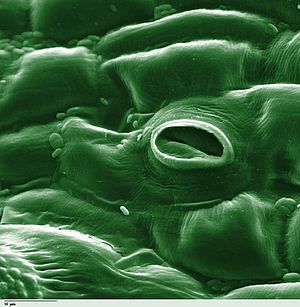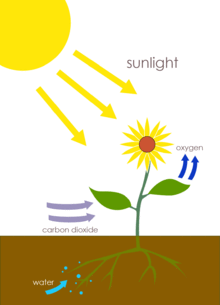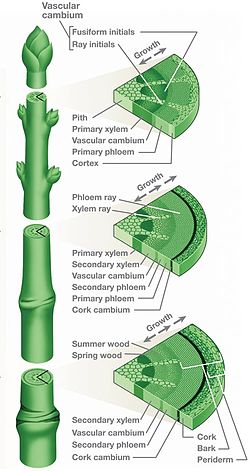
What Keeps the Doctor Away from the Apple?
 There are many elements that Malus domestica needs to develop
correctly. This includes nitrogen, phosphorus, potassium,
and water. The roots take all of these nutrients up from
the soil. Carbon dioxide is another nutrient apple trees
need to absorb. They get CO2 from the
atmosphere through
There are many elements that Malus domestica needs to develop
correctly. This includes nitrogen, phosphorus, potassium,
and water. The roots take all of these nutrients up from
the soil. Carbon dioxide is another nutrient apple trees
need to absorb. They get CO2 from the
atmosphere through openings in the leaves called stomata.
CO2 is needed to carry out a process called photosynthesis.
Like
lemongrass,
watermelon,
saffron and most other plants, the apple uses photosynthesis to obtain its
energy. Photosynthesis turns light from the sun, CO2 from
the atmosphere, and water to a usable source of energy in the
form of sugar. The plant can then store these sugars in
the
form of starch for later use. When this plant
undergoes photosynthesis, it does
not just produce energy for itself, but releases
oxygen into the atmosphere. This is very
important for
openings in the leaves called stomata.
CO2 is needed to carry out a process called photosynthesis.
Like
lemongrass,
watermelon,
saffron and most other plants, the apple uses photosynthesis to obtain its
energy. Photosynthesis turns light from the sun, CO2 from
the atmosphere, and water to a usable source of energy in the
form of sugar. The plant can then store these sugars in
the
form of starch for later use. When this plant
undergoes photosynthesis, it does
not just produce energy for itself, but releases
oxygen into the atmosphere. This is very
important for
 organisms like humans, which give off
CO2 and take in oxygen to survive. In this regard, plants
that photosynthesize and organisms that take in oxygen have an
obligate relationship.
organisms like humans, which give off
CO2 and take in oxygen to survive. In this regard, plants
that photosynthesize and organisms that take in oxygen have an
obligate relationship.
There are certain structures of Malus domestica that are
important to the plants survival. There are 2 types of
vascular tissue that aid Malus domestica. The phloem is
the tissue that carries sugars from the point of production to
the rest of the tree. The xylem is the tissue that
transports water from the point of absorption to the rest of the
tree. The xylem is able to move water from the roots to the top
of the tree through two actions, the capillary action and root
pressure. The leaves are also a very important structure
of Malus domestica. Leaves allow a large surface area for
the absorption of light, one resource needed for photosynthesis.
Another resource needed for photosynthesis is CO2. CO2 is
taken in through small holes on the bottom of leaves, called
stomata. Although most water is absorbed through the roots,
leaves can also help in the absorption of water, so it makes
sense that the major site of photosynthesis is the leaves.
